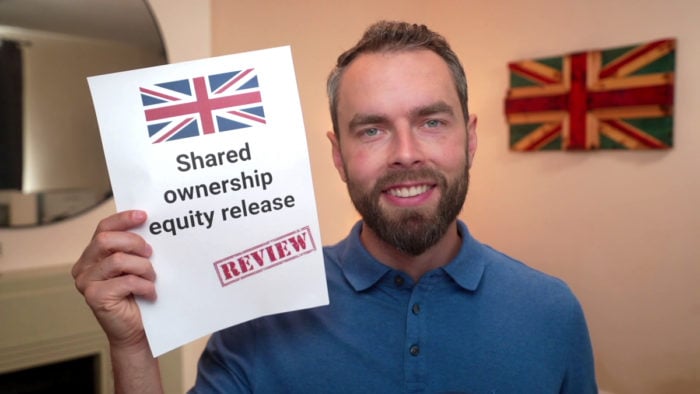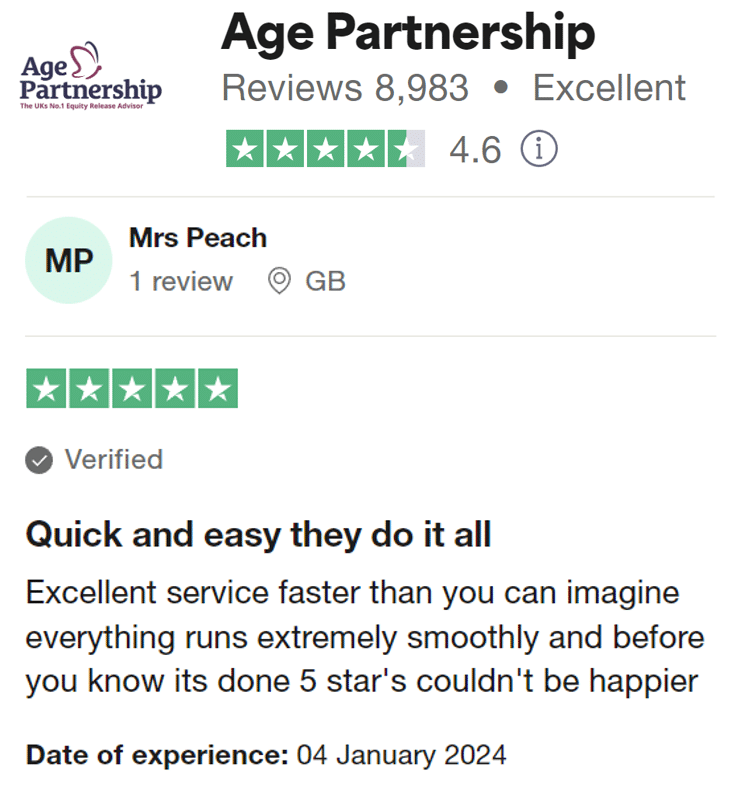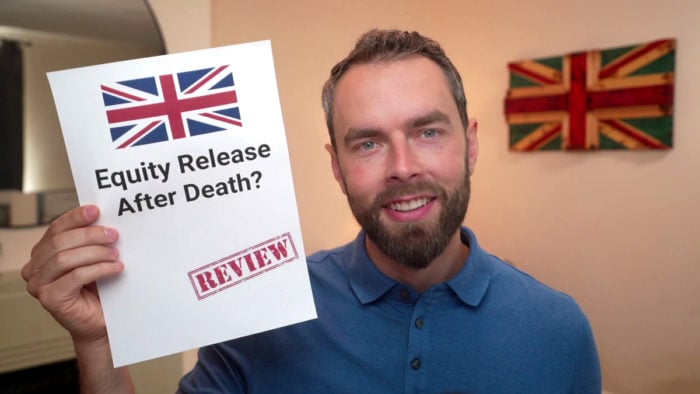Shared Ownership Equity Release – Overview & More
Our preferred equity release adviser is Age Partnership. For free and impartial money advice you can visit MoneyHelper.

Our preferred equity release adviser is Age Partnership. For free and impartial money advice you can visit MoneyHelper.
Are you keen to learn about equity release and shared ownership? You’re at the right place. Each month, our website helps over 7,000 people understand equity release. In this article, we’ll talk about:
- What shared ownership is.
- Risks of your home’s equity.
- How equity works with shared ownership.
- The way to get a good quote.
- Facts about equity release.
The Centre for Ageing Better’s study reveals that a million homes in the UK need changes to be better fit for living comfortably, and a third of these homes have someone over 551. This highlights the importance of making informed decisions about your home, particularly when considering equity release and shared ownership.
We know this could be confusing, but don’t worry; we’re here to help you. Our tips and advice will guide you through the process.
Let’s get started.
What is shared ownership?
Shared ownership is when you buy a percentage of a property with another party owning the remaining percentage of the property.
It is often the case that one party lives in the property and is required to pay rent on the percentage of the property they do not own. For example, if you have 50% ownership of a property, you may live in the property but pay rent at a rate of 50% of what the rent would normally be.
How does equity work in this situation?
If you have shared ownership of a property, your home equity is calculated by working out the value of your percentage of the property and then subtracting any debts attached to the property in your name.
For example, you may own 50% of a property currently worth £200,000. But you might have taken out a £50,000 mortgage to help buy your 50% stake in the property. Therefore, the amount for equity you have in the property at the start is £50,000. This is calculated by working out 50% of £200,000 and then subtracting the £50,000 mortgage debt.
The amount of home equity you have should increase as the mortgage gets paid off, providing that the value of the property does not decrease.
Do’s and Dont’s
As we delve into the details of how equity works with shared ownership, it’s essential to navigate the process with clarity. To help you, I’ve put together this table outlining the do’s and dont’s of equity release. If you want to learn more about equity release, be sure to read our complete guide.
| Equity Release – DO… | Equity Release – DON’T… |
| DO Use equity release to fund sensible investments like home improvements, debt consolidation, helping family members. | DON’T Use equity release to invest in a risky scheme, to please family members pressuring you, to make a luxury purchase or holiday. |
| DO Seek professional advice from professionals who specialize in equity release. | DON’T Rush into a decision. Take your time, you are in control on this. |
| DO Understand the difference between lifetime mortgages and home reversion plans – and which is best for you. | DON’T Use equity release without fully understanding the terms. |
| DO Check for flexibility – look for plans that let you be flexible, like making partial repayments. | DON’T Forget to look at alternative options for raising funds. |
Remember, always take your time to investigate how equity release works. This way, you’ll ensure you’re making the right choice for your needs.
How equity release could help
More than 2 million people have used Age Partnership to release equity since 2004.
How your money is up to you, but here’s what their customers do…
Find out how much equity you could release by clicking the button below.
In partnership with Age Partnership.
Can you use it on jointly owned properties?
Equity release can be used on jointly owned properties, such as a married couple who own their home together deciding to use an equity release plan.
However, both homeowners must meet the age requirement. If one homeowner is older than 55 and the other is younger than 55, they will not be able to apply just yet.
Some people may consider this as “shared ownership equity release” because both individuals have shared ownership of the property. But this is not exactly the correct terminology, because as we explained earlier, shared ownership means something slightly different.
» TAKE ACTION NOW: Fill out the short debt form
How about for a shared ownership property?
Equity release is only available on 100% of properties, meaning anybody who does not own all of their property outright will not qualify for equity release. So in most cases, Equity Release would not be available in shared ownership properties.
However, it might be possible for two individuals who own a percentage of the same property to take out an equity release plan together as long as they both qualify to apply. But this would be very rare.
Why is it not available?
Equity release is only available to an individual or individuals who own 100% of a property with no debts attached. With shared ownership, each party owns a percentage of the property.
The reason it is essential that the equity release applicant owns 100% is that the lender will force the sale of the property in the future, which may not be possible if another party owns a percentage of the property.
In a nutshell, equity release on a shared ownership property could get very messy.
Join thousands of others who release equity
Age Partnership have helped over 2 million people release equity from their home.

Mrs Wareham
“I am more than pleased to have taken out Equity Release with Age Partnership.”
Reviews shown are for Age Partnership. Search powered by Age Partnership.
Can you use it on leasehold properties?
A leasehold property is a property where the owner owns the property but does not own the land that the property is built on. A prime example of a leasehold property could be a flat within a block of flats. The flat owner may own the flat but they do not own the land that it is built on, or any of the flats built below their flat.
These properties have a lease on the land, which is what heavily determines whether or not you can get equity release on your leasehold property.
Most equity release providers will only consider providing equity release on leasehold properties with a minimum of 90 years left on the lease, some may require as many as 120 years on the lease. If you have below the required years on the lease, then you will need to apply to extend the lease first.


